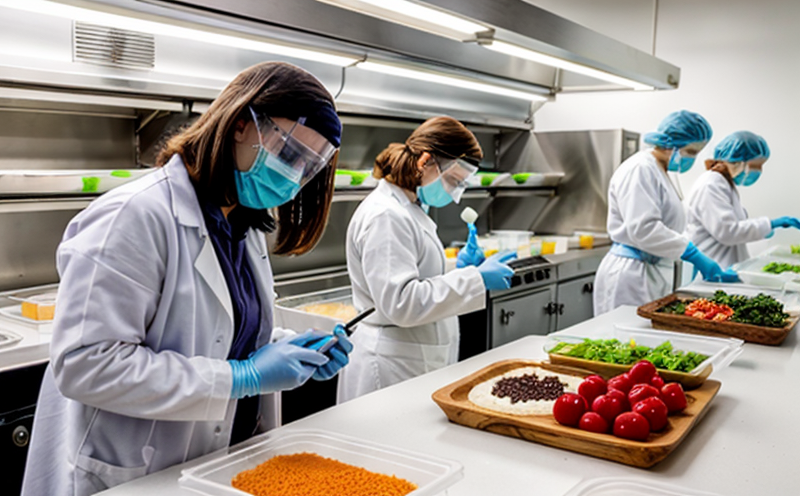FDA BAM Chapter 4 Yeast and Mould Testing in Food
The FDA's Bacteriological Analytical Manual (BAM) is a comprehensive resource for food microbiology testing, widely recognized by regulatory bodies worldwide. Chapter 4 specifically focuses on the identification, enumeration, and detection of yeast and moulds in food products.
Yeast and mould are ubiquitous microorganisms that can have significant impacts on food quality, safety, and shelf life. The FDA's stringent guidelines outlined in BAM Chapter 4 provide a standardized approach to ensure accurate testing results. This chapter is essential for ensuring compliance with regulatory standards, maintaining product integrity, and protecting public health.
Understanding the types of yeast and mould that can contaminate food products is crucial. Common genera include Aspergillus, Fusarium, Mucor, and Penicillium. These microorganisms can spoil food, cause allergic reactions in sensitive individuals, and produce mycotoxins that are toxic to humans. Accurate testing is therefore vital for ensuring the safety of food products.
The FDA's BAM Chapter 4 provides detailed protocols for sampling, preparing samples, inoculating culture media, and identifying fungi using microscopic examination or biochemical methods. It also includes procedures for determining colony counts, which are critical indicators of contamination levels in food products.
Compliance with these guidelines is not only a matter of regulatory obligation but also an important step towards maintaining consumer trust. By adhering to FDA standards, manufacturers can demonstrate their commitment to producing safe and high-quality food products. This compliance also helps protect against potential legal issues and recalls due to microbial contamination.
Given the complexity of yeast and mould testing, it is essential to have a laboratory with expertise in this area. Our team of microbiologists and chemists are trained to handle these challenges effectively, providing accurate results that meet FDA standards. We use state-of-the-art equipment and follow strict protocols to ensure reliable test outcomes.
- Our laboratories are equipped with advanced microscopy and spectrophotometry tools for precise identification of fungi.
- We utilize quantitative PCR (qPCR) technology for rapid detection and quantification of specific yeast and mould species.
- Our analysts have extensive experience in interpreting results according to FDA BAM Chapter 4 guidelines.
In summary, FDA BAM Chapter 4 Yeast and Mould Testing is a critical component of food safety. By adhering to these standards, we can ensure that our testing procedures are accurate, reliable, and compliant with international regulations.
Why It Matters
The importance of FDA BAM Chapter 4 Yeast and Mould Testing cannot be overstated. Accurate testing is essential for ensuring the safety and quality of food products, which directly impacts public health and consumer trust.
Contamination by yeast and mould can lead to spoilage, increased risk of allergic reactions, and even the production of harmful mycotoxins. These contaminants not only affect product shelf life but also pose serious health risks if consumed.
By adhering to FDA standards, manufacturers can demonstrate their commitment to producing safe and high-quality food products. This compliance is crucial for maintaining consumer confidence and avoiding potential legal issues and recalls due to microbial contamination.
In addition to regulatory compliance, accurate testing helps ensure product integrity and quality. Consumers expect food products to be free from harmful microorganisms, and accurate testing results can help meet these expectations.
Benefits
The benefits of FDA BAM Chapter 4 Yeast and Mould Testing extend beyond mere compliance; they encompass a broader range of advantages that contribute to the overall quality and safety of food products. Accurate testing ensures that manufacturers can identify potential contamination early, allowing for swift corrective actions if necessary.
By adhering to FDA standards, companies can enhance their reputation as leaders in food safety and quality. This not only boosts consumer confidence but also strengthens brand loyalty. Consumers are more likely to trust brands that demonstrate a commitment to high standards of hygiene and safety.
In addition to enhancing the company's image, accurate testing helps minimize risks associated with microbial contamination. Early detection allows for corrective actions, reducing the likelihood of product recalls and associated costs. This proactive approach can significantly reduce financial losses and negative publicity.
Moreover, compliance with FDA standards ensures that food products meet international regulatory requirements. This is particularly important in a global market where food safety regulations vary by country. By adhering to FDA guidelines, manufacturers ensure their products are acceptable across different markets without the need for additional testing or modifications.
Environmental and Sustainability Contributions
- By ensuring food safety through accurate yeast and mould testing, we contribute to reducing waste in the food supply chain. This helps minimize environmental impact by preventing spoiled products from being wasted.
- Accurate testing also supports sustainable practices by enabling early detection of contamination, which can prevent the use of excessive preservatives or other interventions that may harm the environment.
- Our commitment to FDA BAM Chapter 4 Yeast and Mould Testing aligns with broader sustainability goals by promoting the production of safe, high-quality food products. This reduces the need for reprocessing or disposal of contaminated products, thereby conserving natural resources.





